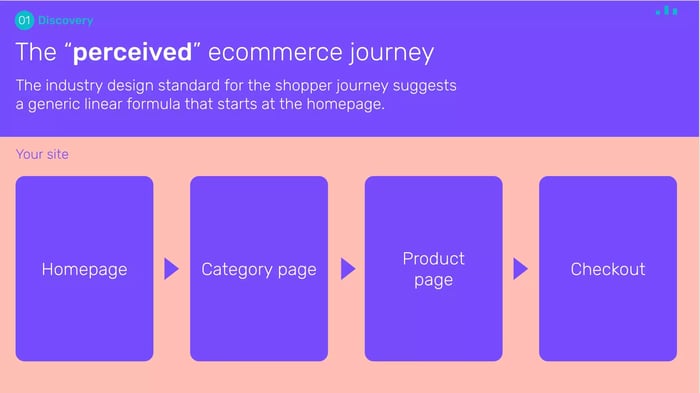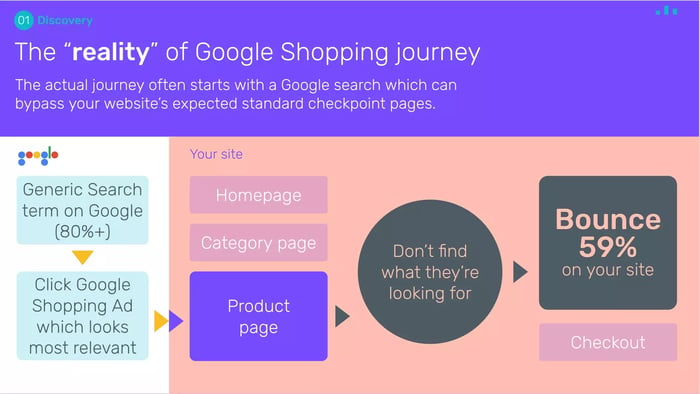Updated on August 3, 2023 | 3 minute read | Olivia MacCunn
Home > Resources > Why does your hard-won search traffic bounce?
When analysing and optimising your campaign performance data, do you take into account the cost of bounce rate?
A high bounce rate could mean a lot of wasted ad spend. But what causes a high bounce rate on your product pages? There are two key reasons:
• they were unable to see a product relevant to the search term;
• or they just got bored waiting for the page to load.
Often, when shoppers don’t know exactly what they’re looking for, they click your Shopping ad. And if it doesn’t take their fancy, they’ll bounce right back to the search results.
After bouncing back to the SERPs, the user has two options: to click another one of your ads and cost you more money or to click your competitor’s ad, in which case you risk losing a potential customer. You see, we like to think we know how our audience uses our website, maybe something like below.

But often the reality looks a little different.

80% of searches on Google are broad, awareness search terms. Within that 80% of searches, the ideal landing page would offer multiple alternatives or similar products in order for the uninvested shopper to ‘discover’ the ideal product from your catalogue.
Through Google Shopping, you don’t have a choice where you send the shopper. You have to send them directly to a product page, meaning that before the shopper has established their intent to buy, they’re served a page optimised for conversions rather than for product discovery.
Often, a product page has no recommendations, the products recommended aren’t relevant to the user’s original search query, or ‘similar products’ are placed far below the page fold.
So what can you do as a retailer when uncertain shoppers click your ads?
A key focus among savvy retailers in 2023 is optimising for product discovery. Providing related and similar products on each product page means shoppers can continue their shopping journey, finding a product that suits their needs.
The biggest challenge for retailers is finding the balance between optimising for page load speed and providing a quality website experience that converts a browsing shopper into a happy customer.
Consumers have come to expect items and services ‘on demand’. And similarly, patience for web page loading has dropped too. Research finds that when page loading speed increases from one second to five seconds the probability of bounce increases by 90%.
How can you improve page speed?
• Read more on how website speed affects your conversion rates
• Learn more about adding structured data to product pages
• Discover how using device bid modifiers and dayparting can optimise your Shopping campaigns

